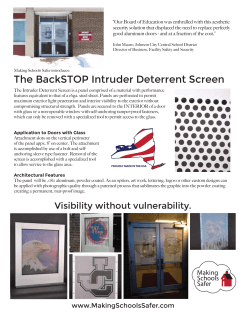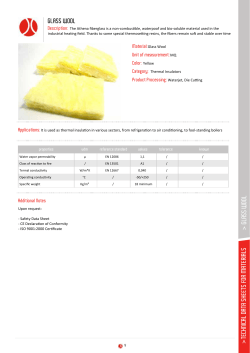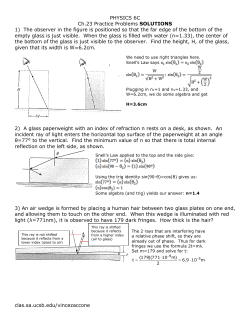
Weatherize Your House
Weatherize Your House Background: A torn or open coat will allow heat to escape from your body, just as a crack near a window in your house might let the cool or hot air escape! Sealing cracks and openings to the outside of your home with weatherstripping can keep the warm (or cold) air inside and lower energy costs. Materials List: • 2 clear plastic cups or glasses • Measuring cup • 8 oz hot water (no more than 100°F/38°C) • 2 thermometers (that can be put in water) • 2 half gallon juice/milk cartons with a long, thin opening (about 1/8 inch by 4 inches) in each of the four sides and in the top. (The boxes should be identical.) • Masking or cellophane tape • Table fan • Stop watch • Data Sheet • Pencils • Graph paper (Easel pad) and markers • Weather-stripping Safety Precaution: Beware of hot water around young children. Make sure the fan is child-proof. Directions: 1. Fill two glasses with 4 oz. hot water. Put a thermometer in each glass and record the water temperature on the data sheet. 2. Put one glass in Box 1. Close the top, but do not tape it. Turn the fan on and direct it toward the box. 3. Put the second glass into Box 2. This time, seal the top and side openings of the box with tape – put in line with fan. 4. On the data sheet, predict what you think the water temperature will be after 15 minutes for each glass. 5. Check and record the temperature of each glass after 15 minutes. 6. Graph on large format graph as recording temperatures. Learning Assessment • How did taping over the small openings of the box affect the water temperature? • Where in your home might you put weather-stripping to close up the “leaks”? Adapted from Weatherstripping “Get Smart About Energy” CD US Department of Energy Weatherize (weather-stripping) Your Home Data Sheet Time Elapsed (minutes) 0 1 2 3 4 5 6 7 8 9 10 Box 1 – open Water temperature °C Box 2 – closed Water temperature °C
© Copyright 2025





















